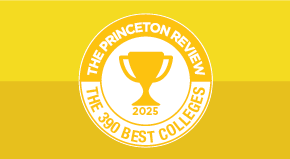
Project-Based Learning (PBL) is an innovative student-centered approach emphasizing active learning, collaboration, and critical thinking. Students are involved in creating projects or products that address real-world problems or challenges.
In PBL, students work on projects that are designed to be complex, challenging, and authentic. These projects require students to use a range of skills, including research, analysis, problem-solving, and communication. PBL projects are often interdisciplinary, integrating multiple subjects and skills.
How Project-Based Learning Differs from Traditional Learning
Traditional learning is often focused on obtaining knowledge and skills through lectures, textbooks, and tests. In contrast, PBL emphasizes utilizing knowledge and skills in real-world contexts. PBL also promotes collaboration and teamwork, whereas traditional learning often emphasizes individual achievement.
Benefits of Project-Based Learning
PBL offers numerous benefits for both educators and students. Some of the key benefits of PBL include:
Enhancing Critical Thinking and Problem-Solving Skills
By working on real-life projects, students develop the skills they need to analyze information, evaluate options, and make informed decisions.
Promoting Collaboration and Creativity
this helps students develop social and emotional skills. By working together on projects, students learn to communicate effectively, share ideas, and respect diverse perspectives. PBL also encourages creativity by allowing students to explore new ideas and approaches.
Fostering Student Engagement and Motivation
PBL is a highly engaging approach to learning that motivates students to take ownership of their education. By working on projects that are relevant and meaningful to them, students are more likely to be invested in their learning and to take an active role in the process.
Developing Real-World Skills and Knowledge
By working on projects that are relevant to their lives and communities, students are better prepared for the challenges they will face in the future.
Improving Assessment and Evaluation
PBL offers a more authentic and comprehensive approach to assessment and evaluation. Instead of relying solely on tests and quizzes, PBL allows educators to assess student learning through the creation of projects and products and finding solutions to problems.

Examples of Successful Project-Based Learning
PBL can be applied to a wide range of subjects and topics.
STEM projects students are challenged in designing and building robots, creating computer programs, or conducting scientific experiments. Students can apply their knowledge of science, technology, engineering, and math in real-world contexts.
Social studies projects students are tasked with researching and analyzing historical events, creating maps and timelines, or conducting interviews with community members. These projects allow students to develop their research and analysis skills while learning about the world around them.
Language arts projects these consist of writing and producing plays, creating podcasts, or publishing a literary magazine. These projects allow students to develop their writing, communication, and creativity skills.
Arts and humanities projects these tasks allow students to reach their creative potential and can involve creating art installations , producing documentaries, or designing community service projects. These projects allow students to explore their interests and passions while developing their skills in the arts and humanities.
PBL offers numerous benefits for educators and students, including enhanced critical thinking and problem-solving skills, improved collaboration and creativity, and increased student engagement and motivation. To implement PBL successfully, educators should follow best practices, such as choosing appropriate projects, setting clear learning goals and objectives, providing adequate resources and support, encouraging reflection and feedback, and evaluating student learning and progress. PBL is an important approach to education in today's world, and educators and students should embrace it as a way to prepare students for future challenges.
Explore Colleges For You
Connect with our featured colleges to find schools that both match your interests and are looking for students like you.
Get Started on Athletic Scholarships & Recruiting!
Join athletes who were discovered, recruited & often received scholarships after connecting with NCSA's 42,000 strong network of coaches.
Best 390 Colleges
168,000 students rate everything from their professors to their campus social scene.
Explore Colleges For You
Connect with our featured colleges to find schools that both match your interests and are looking for students like you.
Get Started on Athletic Scholarships & Recruiting!
Join athletes who were discovered, recruited & often received scholarships after connecting with NCSA's 42,000 strong network of coaches.
Best 390 Colleges
168,000 students rate everything from their professors to their campus social scene.
Explore Colleges For You
Connect with our featured colleges to find schools that both match your interests and are looking for students like you.
Get Started on Athletic Scholarships & Recruiting!
Join athletes who were discovered, recruited & often received scholarships after connecting with NCSA's 42,000 strong network of coaches.
Best 390 Colleges
168,000 students rate everything from their professors to their campus social scene.



